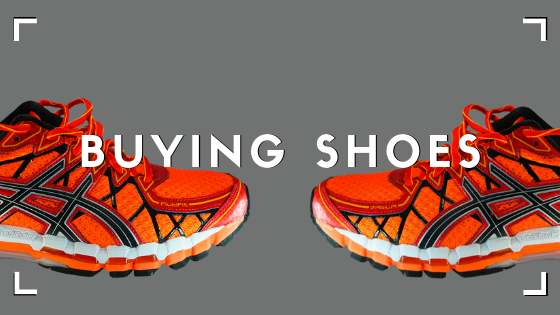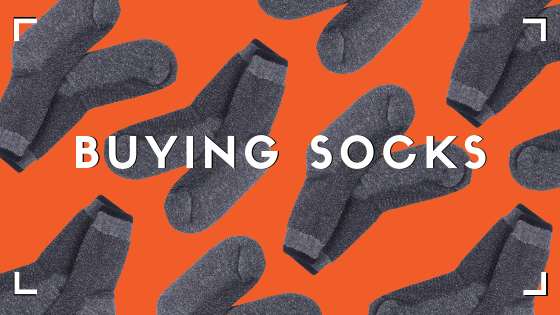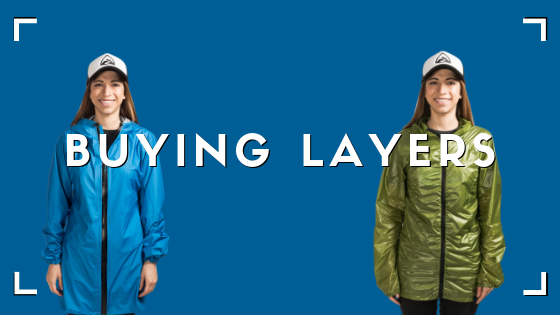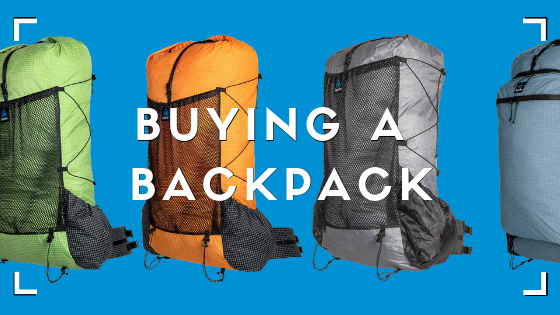Buying hiking gear and hiking clothing as a newbie can be daunting. I’ve spent countless hours online and in stores looking for shoes, backpacks, layers, sleeping bags -- you name it. I've looked at just about every website that sells it.
One of the biggest hurdles I ran into was choosing between buying “regular gear” or the women’s version.
It is tempting to think that women’s specific gear is solely a marketing tactic. The truth is, a lot of companies have abandoned the old “shrink it and pink it” model, and have really focused on women's issues.
Through a combination of research and my own personal experience, here is what I have learned about buying gear designed for women:

Always invest in things that separate you from the ground. Your hiking shoes, boots or whatever you want to wear are the best investment you can make.While shoes aren’t inherently a gendered product, it is definitely worth looking into women’s shoes.
Keep your priorities in mind when choosing hiking shoes. A few things to keep in mind are:
- How many miles you want out of your shoes?
- Do you have any foot/ankle problems?
- What type of hiking you plan on doing?
- What are the trail conditions and weather?
Why womens shoes?
- If you have small feet like me, sometimes your shoe size isn’t available in men’s sizes.
- Women’s feet are shaped differently than men's, and women’s shoes account for that difference. This article breaks down the differences much better than I ever could (X).
Go a half size up when buying shoes. Why?
- Swelling. If you plan on hiking long distances, plan on your feet swelling. Going up a half size will help keep your feet comfortable.
- Blisters. Having shoes that are too tight will give you blisters, no matter how much you break them in or how thick your socks are.
- Sizing up is also important on descents, so you're toes aren't jammed up into the toe-box on the way down.
Figuring out what you want out of your shoes will save you from making an expensive and painful mistake.

You can never have too many socks, and it is important to invest in high quality socks. Your socks should:
- Keep your feet dry
- Dry quickly
- Help prevent blisters
- Keep you warm in the winter
- Let your feet breathe in the summer
You will most likely want to have different socks for different seasons. Socks are very important, make sure you get enough.

- Avoid cotton, seriously. Cotton is not a good insulator when wet, dries slowly, and doesn’t wick moisture.
- Make sure your base layer fits under your mid layer without constricting your movement.
- Limit/offset your zippers. Stacking zippers in the same place can cause cold spots.
- Unfortunately, there are not as many options for women in hiking clothes as men. So don’t be afraid to venture into the men’s section if you aren’t finding what you want.
Hiking clothes can be broken into three layers.
Base layers: This layer is directly touching your skin. Your base layer should protect you from UV rays, chafing, and it should wick away moisture (sweat). Base layers can be loose or tight. Typically you will wear loose base layers in warm weather. Tight base layers in cold temperatures to keep cold air out, and make additional layering easier.
Examples
- Synthetic t-shirts
- Merino wool half zip
- Insulated tights/leggings
- Shorts
- Hiking pants
Mid layers: After base layers, come mid layers. Mid layers are worn in colder temperatures and the goal is to trap your body heat. They tend to have features like a high collar, adjustable cuffs and conveniently located pockets.
Examples
- Down jackets
- Fleece quarter zips
- Turtle necks
- Sweatshirts
Shell layers: This layer is your outermost layer, the function is to protect you from the elements, mainly wind and rain. A shell layer can be worn over base layers or mid layers. The most common shell layer is a rain jacket. Rain jackets can be hardshell or softshell. Hardshell jackets are waterproof and less breathable. Softshell jackets are water resistant and more breathable. Choosing the right one will depend on the weather you plan on encountering.
Examples
- Rain jackets/shells
- Wind shells

Like most gear, it is important to keep your priorities in mind.
- How often do you plan on hiking?
- Are you day hiking, multi-day hiking, thru-hiking?
- What kind of weather do you plan on encountering?
- How much will you need to carry?
Backpacks made for women are created with shorter torso lengths, narrower shoulders, and waist belts designed for women's hips. If you can, try on a pack before you buy it, or get a pack that is very adjustable. What feels good to you is more important that what is conventionally considered correct. You need to wear your backpack, not have your backpack wear you. Having a torso that is too long, or straps that are too overpowering can make for very uncomfortable hikes where you feel crushed. If you are buying a pack online make sure to triple check the fit. A backpack is an investment, having a good one that will last you is important.

Women sleep colder than men, sometimes up to 10 degrees colder! This is important to keep in mind when looking at temperature tolerances. If you are a cold sleeper, try opting for a higher temperature tolerance to stay warm. Women’s sleeping bags tend to have narrower shoulders and wider hips, they also sometimes have extra insulation to account for colder sleeping.
In Conclusion
Everyone has an opinion on what you should buy, avoid, and must have. You won’t know what works for you without trial and error. Too much research can prevent you from ever pulling the trigger, and too little can leave you soaked with blisters and chafing. When making a purchase really think about what you need, what makes you comfortable, and what you use.
TLDR
- Invest in good socks
- Avoid cotton
- Don’t skimp on your backpack, get one that fits your torso and is comfortable
- Get a sleeping bag with a higher temperature tolerance than what you need
- Choosing the correct layers is insanely important
Sources
“Best Women's Backpacking Gear of 2019.” CleverHiker, www.cleverhiker.com/best-womens-backpacking-gear.
“Hiking 101 Part 2: Selecting Clothing and Gear.” Washington Trails Associations, www.wta.org/go-outside/new-to-hiking/hiking-101-1/hiking-101-part-2-selecting-clothing-and-gear.
“Hiking Clothing Guide - What to Wear for Hiking?” Best Hiking, 30 Mar. 2018, besthiking.net/hiking-clothing-guide/.
Jackson, Jane. “How to Choose a Women's Backpacking Backpack.” OutdoorGearLab, OutdoorGearLab, 19 Nov. 2018, www.outdoorgearlab.com/topics/camping-and-hiking/best-backpacks-womens/buying-advice.
“What Is the Difference Between Women's & Men's Running Shoes?” LIVESTRONG.COM, Leaf Group,www.livestrong.com/article/269999-what-is-the-difference-between-womens-mens-running-shoes/.

About the Author
Olivia Magee oversees Social Media at Zpacks and helps monitor trends within the industry. Her contributions to the hiking community includes her work with the American Conservation Experience where she performed trail maintenance in the Smoky's and across the Southeast.

